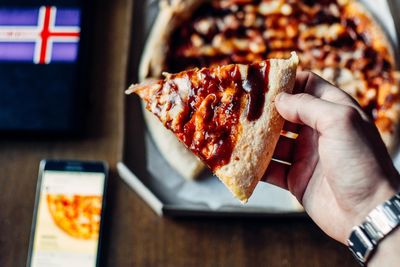Some people have adapted well to the COVID-19 changes and have forged new fitness routines with corresponding success on their diet as well. Many people I know, however, have slipped on their discipline when it comes to both diet and exercise, in light of all the swirling uncertainty.
It’s time to face the music: you need to adapt to the new normal, and get a grip on your diet, exercise, and wellness in this new temporary world. With no clear end in sight, it’s time to make a new plan to succeed with your health, now.
1. Move. Exercise must drive the engine. With thousands of free, easily accessible fitness plans now more available ever, there’s simply no excuse anymore for lack of movement. There is especially no excuse if you have basic equipment at home, and/or outdoor access for hiking, running, cycling, etc. My philosophy as a trainer is “exercise hard, diet moderate” for long term results. The more you exercise, the less strict you have to be on your diet, that’s a fact. Get moving to feel better and to enjoy more freedom with your food.
2. Use common sense. We might be in this scenario for a while. This is not an excuse to go off the deep end with daily drinking binges and dessert for breakfast seven days a week. It’s time to get back to normal with routine limits on indulgences. Remember, we have to connect food choices to outcomes: meaning, eating crap food and drinking too much, for too many days of the week, makes you feel bad; so, to avoid feeling bad, make different choices most of the time. Allow for the occasional deviation, but keep everything in moderation to feel, perform, and look your best.
3. Awareness is everything. Track food and make a plan to avoid mindless eating. One of the best ways to fail with food is to not have a plan. If you know what you’re doing, sit down and plan out variables like calories, macro’s, supplements, hydration, food quality, and meal timings. Of course, though, nutrition is complicated, and so if you feel overwhelmed, consider hiring a professional to help manage your program to suit your goals.
4. Take advantage of meal delivery options. Meal delivery services eliminate many of the pitfalls people fall into with food: the meals have fixed calories and macros, typically are of cleaner quality, and they take guesswork and cravings out of the equation. Many services are affordable and include a number of options to suit tastes, goals, and food allergies. By reducing the chance for impulse and temptations, meal delivery services ensure that you stay on track with your goals.
5. Don’t buy it if it’s not on your program. Most people will agree that if tasty treats are in the pantry, they will eventually get eaten. That being said, one of the best ways to curb cravings is to simply not buy the treats in the first place. Grocery shop with a plan, not on an empty stomach, and keep your goals in mind as you’re placing items in your cart.
6. Use time-tested strategies to check cravings: drinking caffeine, drinking water, chewing gum, consuming straight up protein. Thirst cues are often mistaken as hunger cues. When you find your appetite running out of control, try hydrating first — have a big glass of water, wait 10 minutes, and then check back in with yourself. Another way to combat snacking when bored is to drink caffeine, a proven appetite suppressant. And don’t forget about chewing gum as a distraction to misplaced hunger. Finally, how about a protein shake? The protein is least likely to be stored as fat and is going to leave you feeling full for a while. Keep a high quality protein powder on hand for situations where you need to bridge the gap between meals.
The key to navigating all of COVID-19’s changes is to find a new routine, a new normal. The truth is, we might not be back to fully normal for many months to come. Make a plan, and some backup plans, use your resources, and play your food smart to not only survive COVID but to thrive during it.
